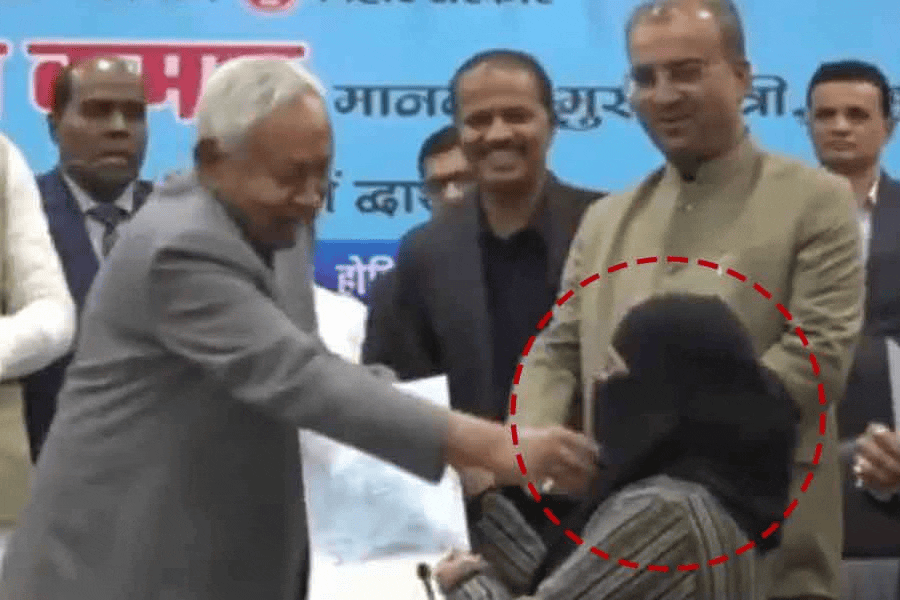 |
Jamshola (East Singhbhum), Sept. 7: Evidence of the oldest human habitation in India — dating back to 2 to 1.2 million years — has been found on the banks of the Subarnarekha in Jharkhand.
A 50-km stretch between Ghatshila in Jharkhand and Mayurbhanj in Orissa has yielded tools which suggest the site could be unique in the world with evidence of human habitation without a break from 2 million years ago to 5,000 BC.
“There are no signs of terra incognito (break in continuum) in the Subarnarekha valley, unlike any other site in India. Some of the heavier tools resemble those found in the East African stone-age shelters, used by the Australopithecus,” says senior anthropologist S. Chakraborty, director of the Union culture ministry’s project on languishing tribal arts and craft of Chhotanagpur and consultant to the pre-history section, Museum of Man, Bhopal.
This uninterrupted habitation could make the site more important than even the Aldovai Gorge in East Africa, the Somme Valley of France, the Stone-henges of England, the Narmada basin in Madhya Pradesh and the Velamadurai-Pallavaram rectangle in Tamil Nadu.
The stone-age tools found at all the other sites belong to a particular period, mostly of the middle and the upper stone ages, barring the Aldovai Gorge, where ancient tools used by the Australopithecus (pre-Paleolithic man, 2 to 1.2 million years ago) have been found.
In India, there are 13 stone-age sites and two in Pakistan, but none is as old as the one in the Subarnarekha valley that Chakraborty chanced upon in February. He returned in the last week of August with a five-member team to excavate a 20-km stretch.
Tools (stone) from the early Paleolithic age — over 1.2 million years ago — till the metal age (5,000 BC), including ancient metal slag, have been found along the rocky bank, embedded in the boulders.
One of the sites has yielded more than 3,000 pebble tools, mostly of the chopper-chopping variety, used by the early hominids (homo erectus) of the lower Paleolithic age.
A rough estimate by the team suggests the area has more than 50,000 stone tools of all ages.
The older rock layers of the upper terraces — comprising metamorphosed quartz, jasper, lateritic-sandstone and haematite — abound in old stone-age tools like crude hand axes, cleavers and machetes. They are carved out of single boulders and chiselled on one side.
Weighing around 2-3 kg on an average, the tools are circular, oblong or roughly triangular with deep grooves for finger grips on large palms.
The middle layers, at a height of 50-70 feet, contain upper Paleolithic and Mesolithic tools like sophisticated axes and a variety of quartz and jasper arrowheads. They are chiselled on both sides with razor-sharp and serrated edges, indicating superior craftsmanship.
Ancient copper slag and crude agricultural tools like hollow stone rings of the Neolithic age are found in the lower rocks and on the shallow riverbed.
So far, only Mesolithic tools have been found in the region.
Geologists at Ranchi University said the Chhotanagpur plateau — of which the site is a part — belongs to the Gondwana landmass, one of the world’s most ancient rock formations.
It was contiguous to the Afro-Eurasian plate, which drifted to form separate continents. This perhaps explains the similarity between the tools found in the Subarnarekha basin and at the East African sites.
Another round of excavation is going to start at a site near Jamshola where Chakraborty worked. “We are going to begin in October,” said Ajit Kumar Prasad, director, state archaeology department, Ranchi.
“The discovery of Paleolithic tools might push back the history of the basin by another million years,” Prasad said.










